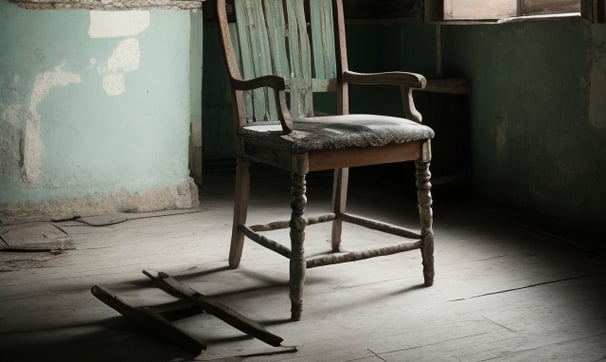Chair failure. Wrong glue.
GLUE FAILURES


This blog post recounts a DIY misadventure in which the wrong glue was used for a chair repair, resulting in a humorous yet cautionary tale about the importance of choosing the correct adhesive for specific applications.
When Sticky Situations Go Horribly Wrong: The Perils of Using the Wrong Glue
In the world of DIY and crafting, adhesive mishaps are all too familiar. We've all been there, thinking we can use any glue for any task, only to discover that this assumption can lead to disastrous outcomes. Here's a cautionary tale of how using the wrong glue for the wrong application can turn your project into a sticky mess.
The Fateful Decision:
Picture this: I had a wooden chair that needed some repair. The leg had come loose, and I was determined to fix it myself. In my haste and overconfidence, I reached for the nearest glue, which happened to be a basic, all-purpose adhesive that I'd used for various other projects. Without a second thought, I applied the glue liberally, securing the wobbly leg back into place.
The Unexpected Disaster:
I left the chair to dry, proud of my DIY skills. However, when I returned to check on my handiwork, I was met with a scene of sheer horror. The chair leg hadn't just reattached; it had practically fused with the floor, thanks to the excessive glue that had dripped onto the tiles. In my quest for a quick fix, I had turned a simple repair into an epic mess.
The Lessons Learned:
Not All Glues Are Created Equal: The heart of the issue was my assumption that one adhesive could work for all situations. In reality, there are various types of glue, each designed for specific materials and applications.
Read Labels Carefully: Take the time to read and understand the labels on adhesive products. They often provide essential information about what materials the glue is suitable for.
Do Your Research: When starting a project, especially one involving different materials, research the appropriate adhesive for the job. It's worth the effort to ensure a successful outcome.
Less is More: Remember that using too much glue can lead to problems. Applying a thin, even layer is often more effective than drowning your project in adhesive.
Clean Up Spills Quickly: In the event of a glue spill, act swiftly to clean it up. Different glues have different drying times, and the longer you wait, the harder it can be to remove.
In the end, my DIY repair attempt taught me that using the wrong glue can lead to comical yet avoidable disasters. Don't let a simple project turn into a sticky situation; take the time to select the right adhesive for the job, read labels carefully, and embrace the mantra that less is often more when it comes to glue. Your projects will thank you for it!
